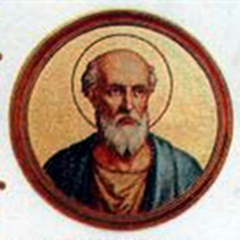Text from The Saint Andrew Daily Missal,
unless otherwise stated.
The Vigil of Saint Simon and Saint Jude.
Apostles.
27 October.
Violet Vestments.
Saint Simon and Saint Jude.
Apostles.
By Father Francis Xavier Weninger, 1876.
Illustration: CATHOLIC HARBOR OF FAITH AND MORALS
Simon, whom Saint Peter calls "The Cananean" to distinguish him from Saint Peter, who bore the same name [Editor: "Simon"], was born at Cana, in Galilee. Saint Luke calls him "Zelotes", because had had probably belonged to the Jewish party, thus called for its zeal in defending the Faith.
Jude, surnamed "Thaddeus" or "Lebbe" (The Courageous), was, by Cleophas, his father, and Mary, his mother, a nephew to Saint Joseph and The Blessed Virgin Mary and cousin to Jesus.
Saint James the Less, first Bishop of Jerusalem and the first Apostle Martyred, and Simeon, who succeeded him in this See, were his brothers.
These Apostles of Christ heard from the lips of The Master at The Last Supper the words of the Gospel: "I am the vine, you are the branches. Every branch which bears fruit, My Father shall prune in order that it should bear more."
After having preached the Gospel, at the price of great sufferings, the first in Egypt, the second in Mesopotamia, they were both Martyred in Persia (Introit, Gradual, Communion).
Wherefore, their Feasts are Celebrated on the same day, in the same Office, and their names are mentioned jointly in The Canon of The Mass.
Mass: Intret in conspéctu.
The Gloria is not said.

THE SAINT ANDREW DAILY MISSAL
THE SAINT ANDREW DAILY MISSAL
Available (in U.K.) from
Available (in U.S.A.) from







